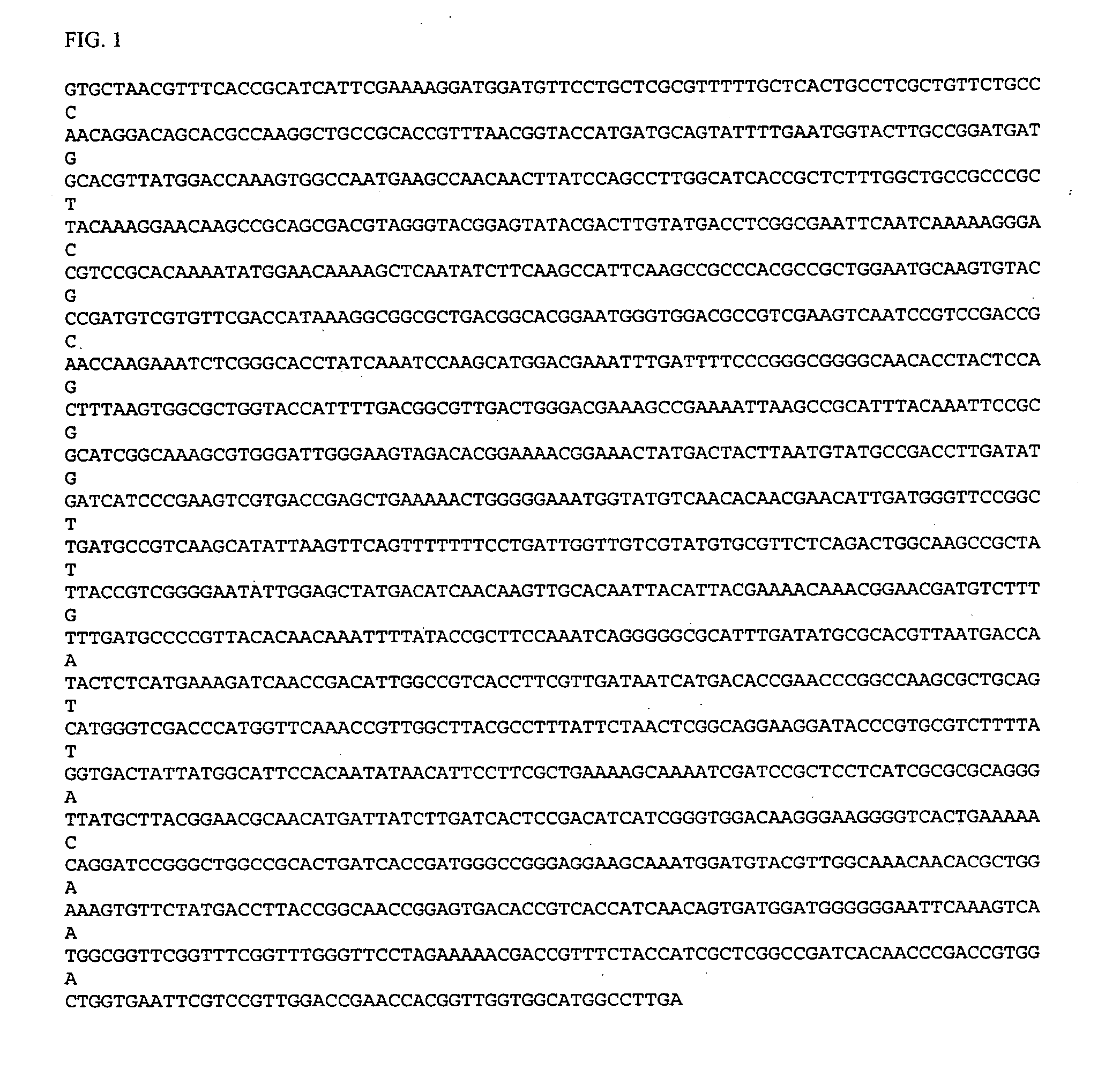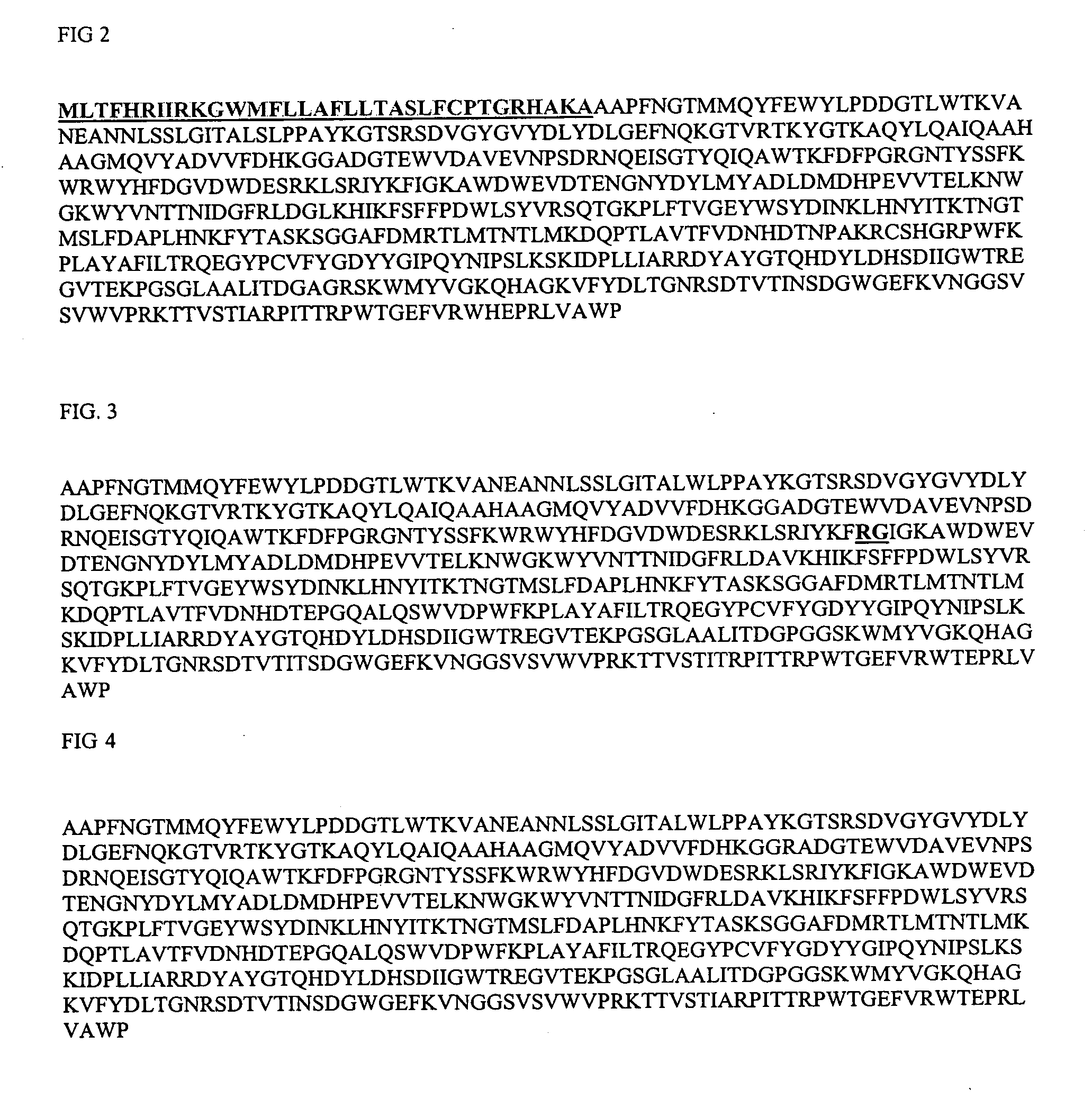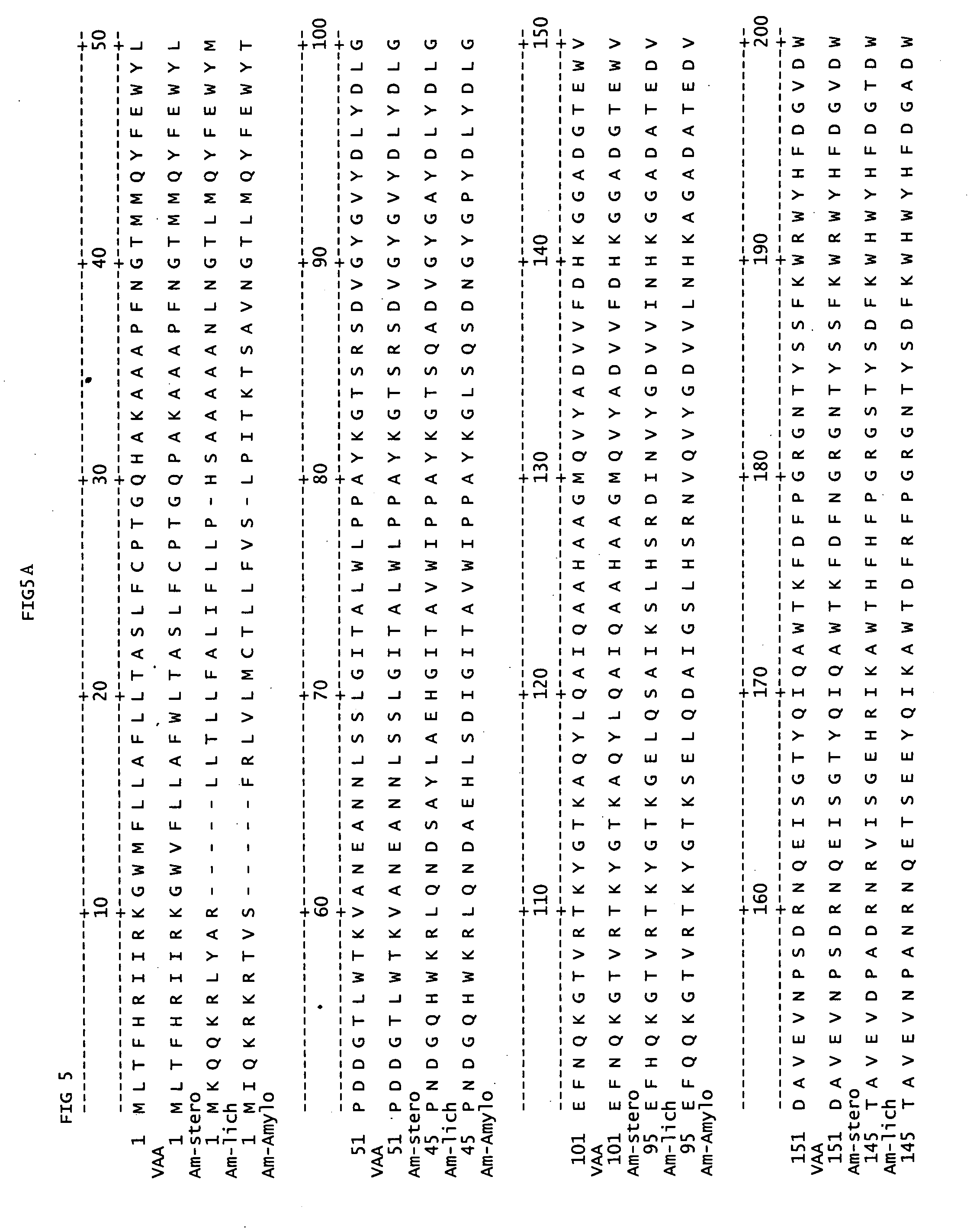Mutant alpha-amylases
- Summary
- Abstract
- Description
- Claims
- Application Information
AI Technical Summary
Benefits of technology
Problems solved by technology
Method used
Image
Examples
embodiments
Suitable Amylase Sources
[0084] The precursor α-amylase is produced by any source capable of producing α-amylase. Suitable sources of α-amylases are prokaryotic or eukaryotic organisms, including fungi, bacteria, plants or animals. Preferably, the precursor α-amylase is derived from a Bacillus; more preferably, by Bacillus licheniformis, Bacillus amyloliquefaciens or Bacillus stearothermophilus; more preferably, the precursor α-amylase is derived from Bacillus stearothermophilus or Geobacillus stearothermophilus (SEQ ID NO.:3). Modification of the precursor DNA sequence which encodes the amino acid sequence of the precursor α-amylase can be by methods described herein and in commonly owned U.S. Pat. Nos. 4,760,025 and 5,185,258, incorporated herein by reference.
[0085] In another embodiment, the precursor α-amylase equivalent to the mature Geobacillus stearothermophilus in FIG. 3, has a % amino acid sequence identity of at least 75%, 80%, 85%,90%, 92% 95%, 96%, 97%, 98%, 99% of SEQ...
example 1
Expression of the Variant Alpha in Bacillus licheniformis
[0125] The variant alpha amylase, a variant of Geobacillus stearothermophilus α-amylase, was expressed in Bacillus licheniformis as a fusion protein with the signal peptide of B. licheniformis α-amylase (LAT) (see FIGS. 6a and 6b). The gene fusion was created by PCR amplification of the sequence encoding the mature chain of the variant alpha amylase from plasmid pCPCori (obtained from Enzyme BioSystems, Beloit, Wis., USA); and cloning into the vector pHPLT. PCR reactions were typically performed on a thermocycler for 30 cycles with High Fidelity Platinum Taq polymerase (Invitrogen) according to the instructions of the supplier (annealing temperature of 55° C.). pHPLT contains the LAT promoter (PLAT), a sequence encoding the LAT signal peptide (preLAT), followed by PstI and HpaI restriction sites for cloning. Variant alpha amylase (VAA) was created as PstI-HpaI fragment by fusion PCR (necessary to remove the internal PstI site...
example 2
Assay For Determining α-Amylase Activity
[0129] Soluble Substrate Assay: A rate assay was developed based on an end-point assay kit supplied by Megazyme (Aust.) Pty. Ltd. A vial of substrate (p-nitrophenyl maltoheptaoside, BPNPG7) was dissolved in 10 ml of sterile water followed by a 1:4 dilution in assay buffer (50 mM maleate buffer, pH 6.7, 5 mM calcium chloride, 0.002% Tween20). Assays were performed by adding 10 μl of amylase to 790 μl of the substrate in a cuvette at 25° C. Rates of hydrolysis were measured as the rate of change of absorbance at 410 nm, after a delay of 75 seconds. The assay was linear up to rates of 0.2 absorption units / min.
[0130]α-Amylase protein concentration was measured using the standard Bio-Rad Assay (Bio-Rad Laboratories) based on the method of Bradford, Anal. Biochem., Vol. 72, p. 248 (1976) using bovine serum albumin standards.
PUM
| Property | Measurement | Unit |
|---|---|---|
| Temperature | aaaaa | aaaaa |
| Temperature | aaaaa | aaaaa |
| Fraction | aaaaa | aaaaa |
Abstract
Description
Claims
Application Information
 Login to View More
Login to View More - R&D
- Intellectual Property
- Life Sciences
- Materials
- Tech Scout
- Unparalleled Data Quality
- Higher Quality Content
- 60% Fewer Hallucinations
Browse by: Latest US Patents, China's latest patents, Technical Efficacy Thesaurus, Application Domain, Technology Topic, Popular Technical Reports.
© 2025 PatSnap. All rights reserved.Legal|Privacy policy|Modern Slavery Act Transparency Statement|Sitemap|About US| Contact US: help@patsnap.com



